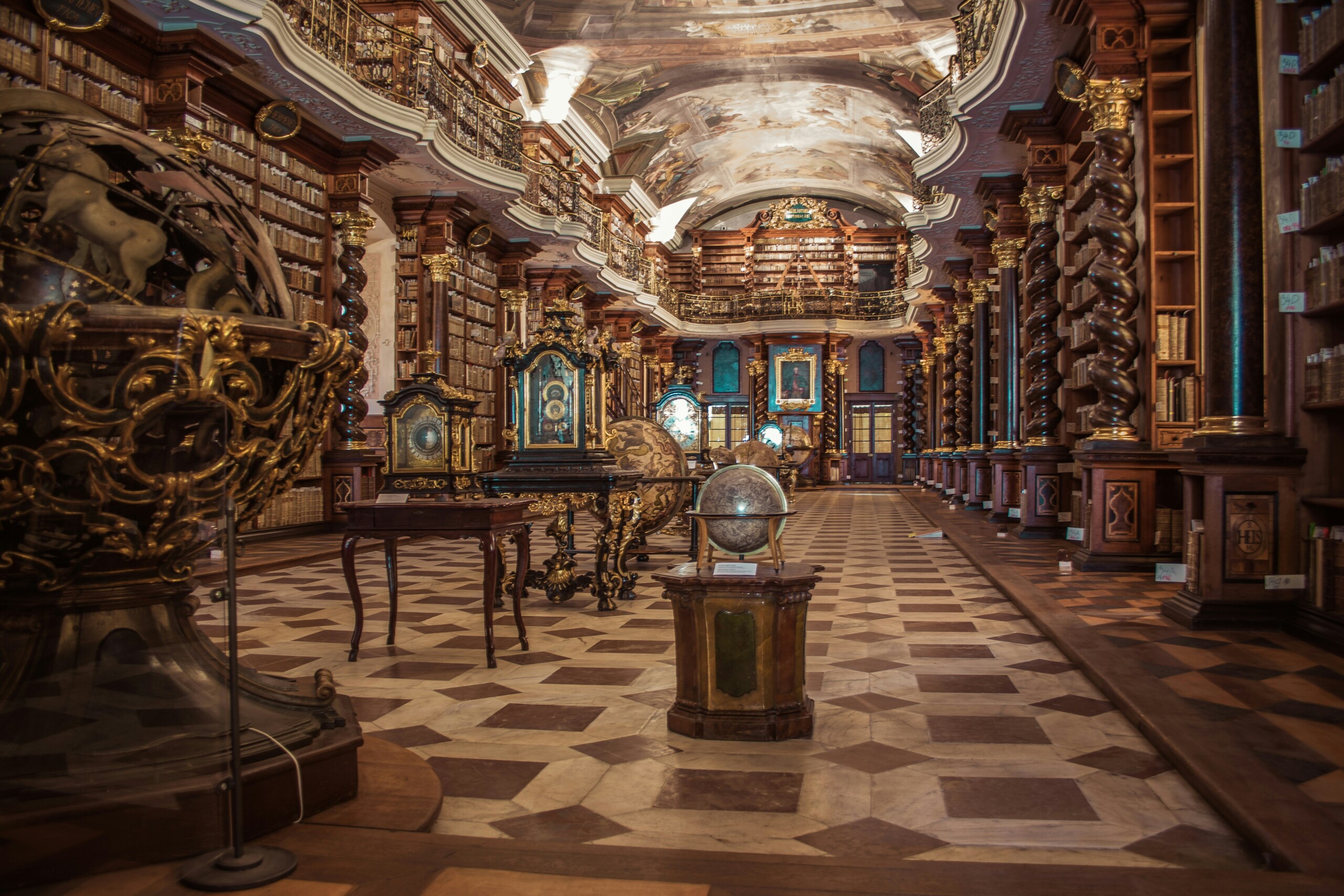I am an art historian by trade, and recently, I experienced the chance to produce an artwork background lecture at my church. I always relish these instances, simply because they give me a prospect to share my enthusiasm with a broader audience. They also, it’s possible shockingly, help me with my individual investigate. Im deeply fascinated in how artwork can impression peoples everyday lives and religious states, and its wonderful to get firsthand accounts from normal folks.
The typical topic of my lecture was visual healing, and the certain concentrate of our dialogue was the Christian crucifix – that is, the cross bearing the crucified human body of Jesus. The crucifix is a powerful cultural icon that has been appropriated by artists as varied as the modernist Jean-Michel Basquiat, the Jewish Marc Chagall and the rapper Kanye West. But for a lot of folks, the crucifix can be tricky to appear at it reveals an innocent sufferer of execution, following all, just at the stage of his expiration. For that latter explanation, most likely, most churches now omit the common crucifix from their worship spaces: it evokes too significantly soreness and sadness. Its emphasis is too dim.
In this regard, curiously, modern day churches are like the earliest ones: the pretty 1st Christians also opted towards crucifixion imagery. The early Christian catacombs, for example, are bereft of Crucifixion narratives, as are the earliest above-ground basilicas. The 1st general public, church-sanctioned image of the Crucifixion, it is believed, can be discovered on the massive wooden door of the 5th-century Santa Sabina church in Rome, Italy. But the doorway has 18 panels, and the crucifixion scene occupies one particular of the smallest, relegated to the extraordinary upper left. In other phrases, it is basically invisible. Most prominent, by distinction, are images of Moses leading the Jews out of captivity. It would make sense that narratives of collective liberation would consider pride of put amongst a persons newly introduced from persecution. For Christians in the early generations, maybe, the brutal follow of crucifixion was nonetheless way too raw in the collective memory, and the blood of the martyrs was even now way too new.

Panel from the door of Santa Sabina church, Rome, 5th century.
https://commons.wikimedia.org/wiki/File:Crucifixion-Christ-Church-Santa-Sabina-Rome-716123.jpg
3 hundred several years later, nevertheless, the state-sanctioned follow of crucifixion was a distant memory, and Christianity by itself experienced turn out to be the indispensable glue keeping European modern society jointly. In this context, the lifestyle-sized, a few-dimensional crucifix emerged albeit in a type stunning to modern eyes. The so-named Holy Experience of Lucca, named for the striking realism of its visage (imagined to be modeled on Christ himself), is a 7-foot-tall effigy of a crucified king. Listed here, the historical Roman technique of execution is put together with an apocalyptic image of imperturbable, eternal majesty – Christs second coming. It is a paradoxical item, and as considerably as we know, totally special. No other crucifix of this blended antiquity, majesty and scale has still been observed.

The Holy Face of Lucca, ca. 800
https://en.wikipedia.org/wiki/Holy_Face_of_Lucca#/media/File:Volto_Santo_de_Lucca.JPG
A crucifix additional congenial to our modern knowledge of the phrase, and most likely the to start with of its form, is the so-known as Gero Cross of Cologne Cathedral, in Germany. Right here, immediately after about 900 decades of Christian visible-cultural improvement, an artist landed on the sagging, everyday living-sized, loin-clothed variety recognized from tens of millions of prayer playing cards and necklaces, not to point out Hollywood films. And indeed, the Gero cross is a wonderful prototype worthy of emulating. It delineates Christs useless overall body with flowing lines at at the time sophisticated and poignantly realistic. Its humbly drooping head and vulnerable, delicate limbs have properly stirred generations of empathetic reactions and pierced hundreds of thousands of hearts.

The Gero Cross, ca. 900
https://en.wikipedia.org/wiki/Gero_Cross#/media/File:Gerokreuz_total_20050903.jpg
But how can such things be healing?
In my church presentation, audience associates recommended numerous ways. Initially, as one participant claimed, the Crucifix presents us authorization to accept our woundedness, for even God Himself was wounded. One more participant defined how the Crucifix can help him internalize Christs assumption of our sins, generating him feel a perception of liberation. Observing Jesus dangle on the cross can deliver household for us the reality, this means and efficiency of Christs sacrifice. We can let go of our struggles and give them to Jesus, who certainly is presently bearing them with compassion and grace. The crucifix provides all this residence.
In my church presentation, we also reviewed how visuals of the crucified Christ can be socially therapeutic. The so-referred to as black Christ of Esquipulas, Guatemala, for example, helped Guatemalas to start with indigenous Christians understand Christs potential to transcend racial and cultural barriers. Tradition retains that this substantial sculpture, showcasing a Jesus with dim skin, was miraculously observed in a cave sacred to the local men and women. Recent scholarship, meanwhile, implies that the sculpture was made by an Antiguan-Portuguese artist. Regardless, the Christ of Esquipulas has turn into a significant concentration of Guatemalan identity and culture, creating a host of regional devotions, traditions, and celebrations and serving as an anchor for creative improvisation. This unlikely crucifix has helped Guatemalan Christians own their religion in a special and impressive way.

The Black Christ of Esquipulas, Antigua/Guatemala, ca. 1600
https://en.wikipedia.org/wiki/Black_Christ_of_Esquipulas#/media/File:Cristo_negro_de_Esquipulas.jpg
Meanwhile, as the Christ of Esquipulas was unveiled in Guatemala, one more crucifix was earning an impact in southern France. This monumental painted graphic is positioned at the center of Matthias Grunewalds monumental Isenheim Altarpiece, and its visceral punch nevertheless captures imaginations right now. Right here, a pock-marked, environmentally friendly-hued, emaciated Christ stiffens in the throes of rigor mortis. Nearby, his light mother faints at the sight. The Isenheim Altarpiece is renowned for staying just one of the most uncompromising pictures of cruel loss of life in all of artwork heritage. And how did it visually mend? As historians recount, this coronary heart-rending picture was positioned in the midst of a clinic specializing in skin conditions. The infirm could appear on it and internalize the depth of Christs empathy with them, alongside with His willingness to assistance bear their struggling.

Matthias Grunewald, The Isenheim Altarpiece, 1516
https://en.wikipedia.org/wiki/Isenheim_Altarpiece#/media/File:Chapel_of_Unterlinden_Museum_with_Isenheim_altarpiece.jpg
From time to time, photographs like the ones mentioned higher than could be pretty much, bodily therapeutic: there are tales, for instance, of miraculous healings before the Christ of Esquipulas. But far more generally, these visuals healed and proceed to heal the thoughts and the imagination, serving to viewers join visually, sensually and physically with the God who bears their sorrows.
Artworks like the Isenheim Altarpiece, the Gero Cross and the Christ of Esquipulas are potent counterpoints to the reductive, exploitative, invasive and manipulative imagery flickering from todays telephones and television screens. They are not loud and demanding, but solemn and silent. They do not invade our private place, but alternatively make us appear out – to the church, the shrine, the chapel – to experience anything sacred and other. They do not make bogus, comfortable claims, but rather proclaim complicated, uncompromising truths. They do not sell satisfaction, but somewhat drive us to be genuine about ache.
Through this Lenten period, I am earning it a practice to prevent digital imagery of all kinds. Rather, I will look for embodied experiences of truthful themes rendered by loving human fingers. Central to this, of training course, will be my attendance at church, among residing illustrations or photos of God Himself, who will acquire all around the Body and Blood of Jesus in the sort of the Eucharist. And Lord willing, I will also check out some of my most loved artworks, built by artists of consummate talent, empathetically invested in topics whose fact they passionately affirmed. By this sort of indicates, I assume, previous and current can be linked, language can be transcended, and the seemingly infinite hole between people today can be spanned. Literate and illiterate, Guatemalan and French, historic and present day, all Gods children can be united, their estrangements healed, at the foot of the cross.



